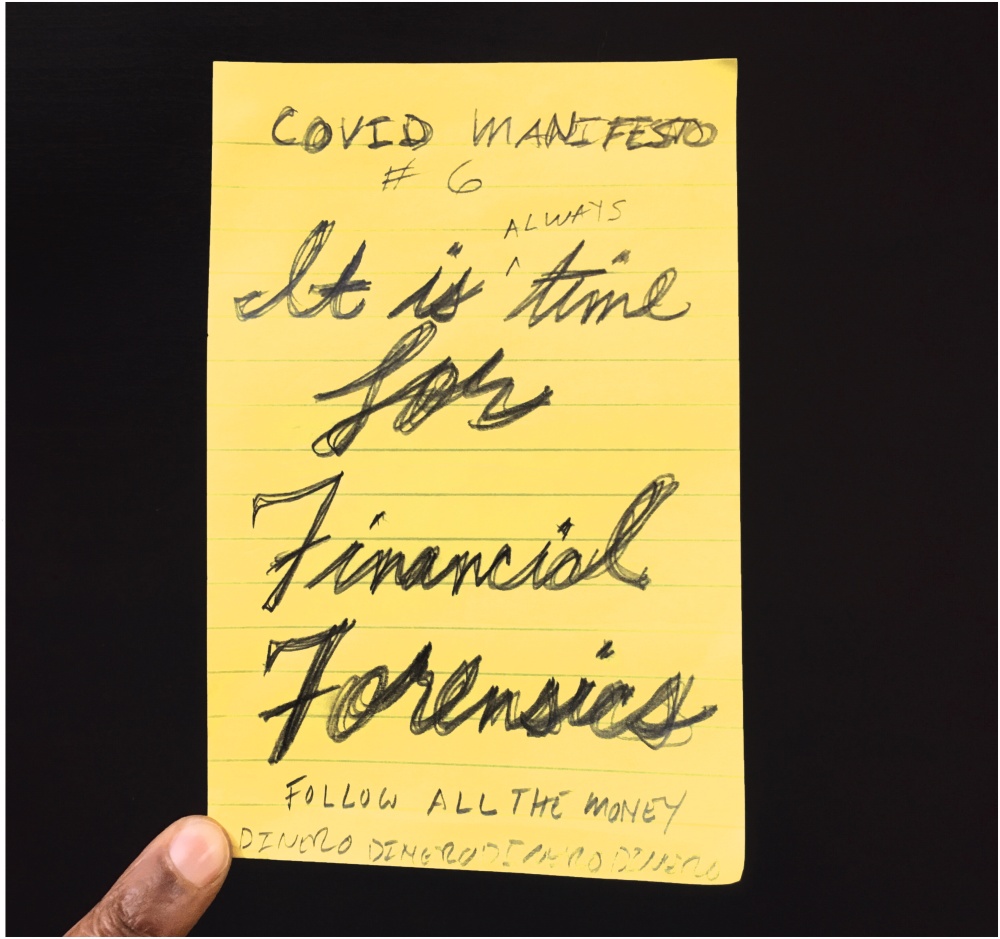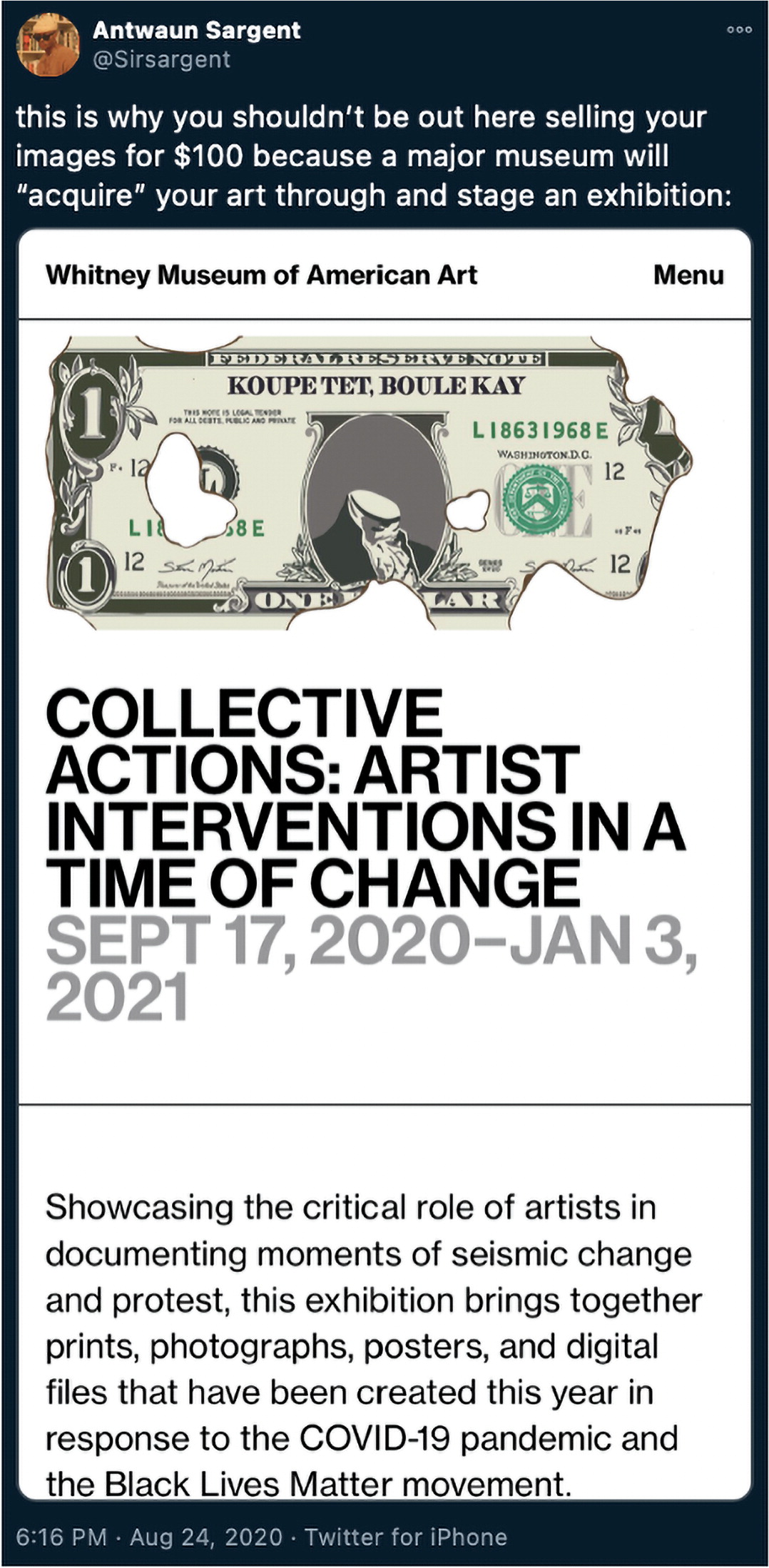Art-Org-Ask
Cauleen Smith

(artwork © Cauleen Smith; photograph provided by the artist)
I do not know the origins of the extractive tradition practiced by nonprofit art organizations, by which artists are asked to donate their work to help art organizations stay liquid; but my experience of them has always felt embarrassingly burdensome and awkward. I must distinguish the annual nonprofit art orgs’ auctions from other types of fundraising campaigns that erupt spontaneously as a form of mutual aid for individuals in our communities after traumas, death, or even just simple life aspirations like healthcare or travel. The “art-org-ask” implies a kind of quid pro quo: “We have shown your work this year, so you must break off some of that labor and give it to us so that we can do the same thing next year.” Once donated, the artist’s work is often discounted and can, depending upon one’s standing within the commercial art market, actually do harm to the value of works we may sell through our galleries by jacking the sale price too high. Or if the discount is not low enough for auction trolls, perhaps the work does not sell at all. This is all kind of messed up. But I do donate artworks to orgs that are either run by friends or have proven themselves supportive of artists in ways that I cannot quantify but value deeply. I want my friends and community to do well and I don’t mind helping. It’s the system itself that is problematic.
And then there are the urgent fundraisers for political causes. These are especially tricky because the organizations generally place the artists’ work into an arena in which the people buying are not necessarily art aficionados at all, but simply people able to put some money toward a good cause and who want something back in return. (Hmmm …) Often there is a price cap so as not to alienate potential donors. These types of orgs will ask you to give them your five-color screenprint/edition of 50 that you hoped to sell for $500 a pop so that they can sell it for some fast money in service of The Cause. (Ouch.) I think that there are many ways of being a good citizen and making a contribution, but this ain’t one that I would encourage. I do have two suggestions. Make something that is low-cost, low-impact for the artist, but respectable at the price point the org requires. Something you would be happy to circulate freely, something one would give away to a friend or studio visitor. But it takes time to make stuff like this. We may not have time. We might only have our gorgeous, expensive prints. Another option is to just sell the work commercially and then break off a percentage to donate to your favorite causes as you can. I reckon everyone makes more money this way. Win win win win. Of course there are many ways to handle and finesse this. All I am suggesting is that we should slow down and consider the terms being offered before giving away our work to organizations that do not have the capacity, nor the desire, to protect us.
Cauleen Smith was raised in Sacramento, California, and lives in Los Angeles. Drawing from structuralism, third-world cinema, and science fiction, she makes things that deploy the tactics of activism in service of ecstatic social space and contemplation. Smith enjoys container gardening, likes cats, collects vinyl records, and rocks. She is on the art program faculty at California Institute of the Arts. She holds a BA in creative arts from San Francisco State University and an MFA from the University of California, Los Angeles, School of Theater, Film, and Television.

